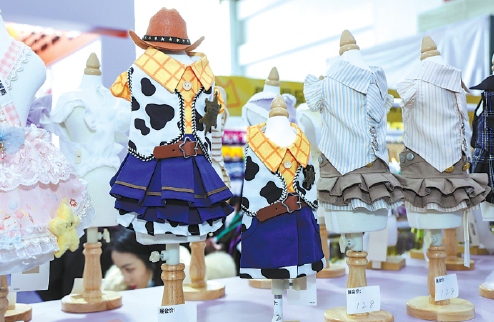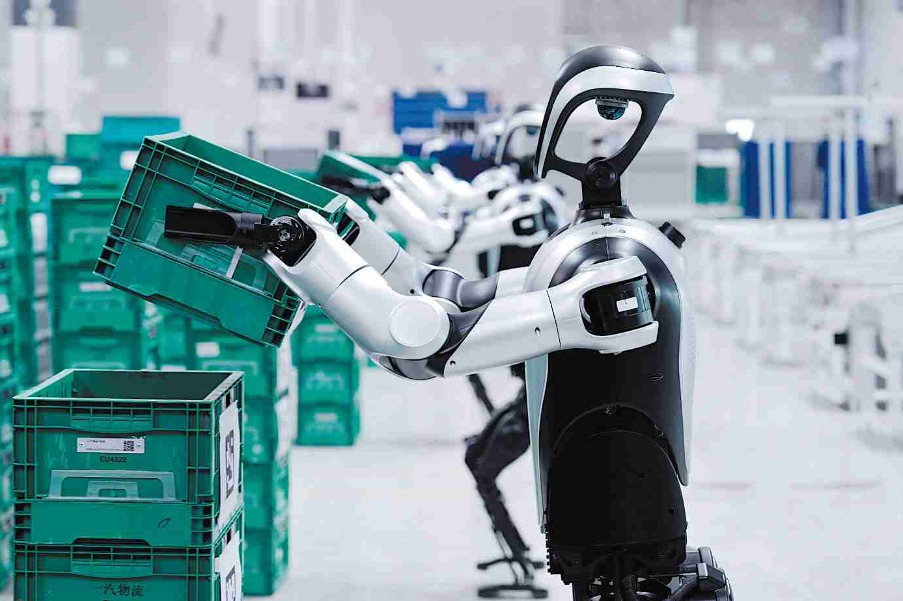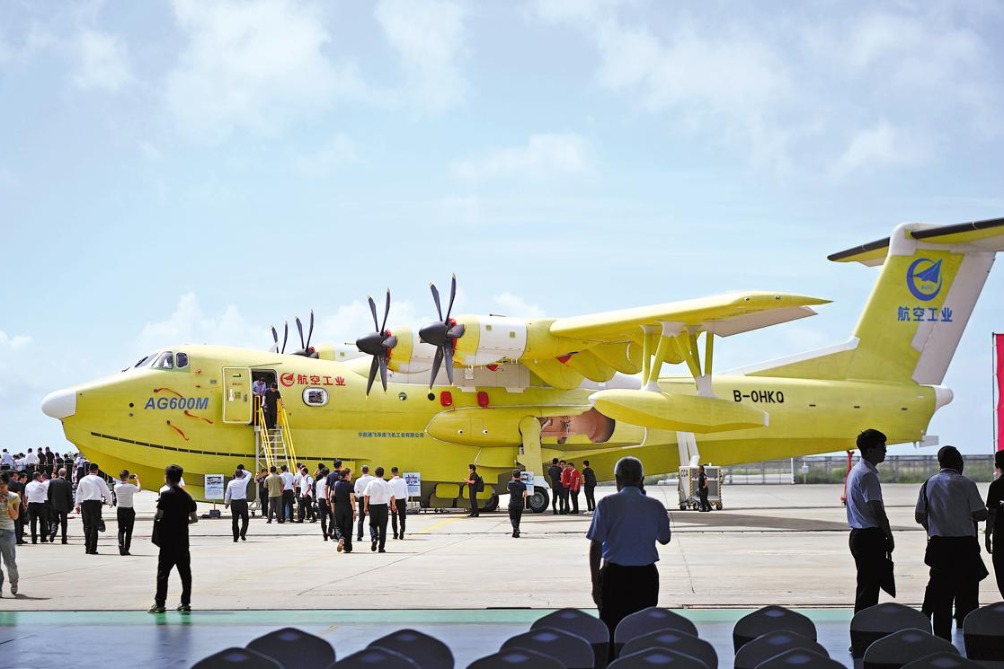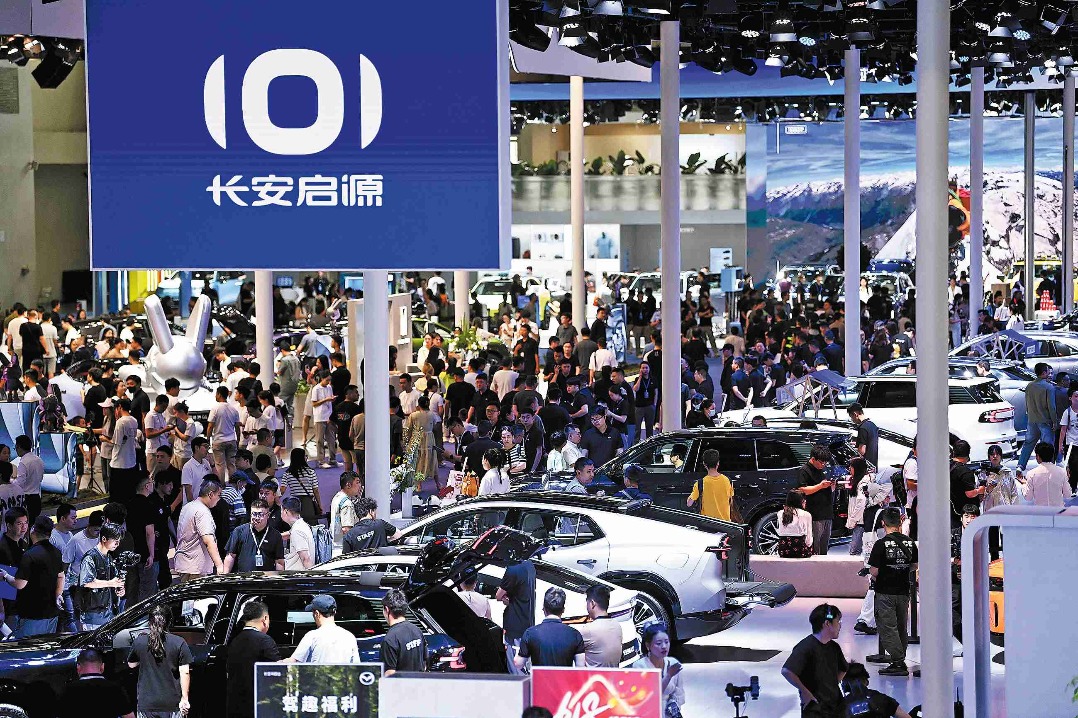Pet market recovery signals economic rebound
Industry expands steadily in 2024 on shifting consumer behavior, an increasingly younger pet-owning demographic

China's pet industry recovered strongly in 2024, with the urban consumption market for pet dogs and cats surpassing 300.2 billion yuan ($41.1 billion), up 7.5 percent year-on-year, according to the 2025 China Pet Industry White Paper recently released by PetData, an industry platform.
The report highlighted the industry's steady expansion, fueled by shifting consumer behavior and an increasingly younger pet-owning demographic.
The pet market recovery signals not only an economic rebound, but also a deeper emotional and financial commitment from pet owners, said the report.
"The growth in the urban pet market underscores a transformative shift in consumer behavior," said Liu Xiaoxia, founder of PetData. "Pet owners are increasingly prioritizing the health and happiness of their animals, which bodes well for the entire industry."
Pet owners are getting younger. One of the most significant changes in 2024 was the shifting demographic of pet owners. Those born in the 1990s still account for the largest share at 41.2 percent, but this figure dropped by 5.4 percentage points from the previous year. Meanwhile, pet owners born in the 2000s surged to 25.6 percent, up by 15.5 percentage points.
"This rise of the post-2000s generation as pet owners is a wake-up call for businesses," Liu said. "They are a generation that demand high-quality products, transparency in sourcing, and a seamless shopping experience. Brands that fail to adapt will find it difficult to remain competitive."
Unlike older consumers, this younger group places greater emphasis on product quality, nutritional value and ingredient traceability. Rather than simply looking for well-known brands, they scrutinize pet food formulations and prioritize value over brand recognition.
"Today's consumers are not just buying pet food — they are investing in their pets' health and well-being," Liu said.
This shift in mindset has led to changes in purchasing behavior. Rather than stockpiling pet food in bulk, 81.4 percent of dog owners and 81.1 percent of cat owners now purchase their pets' main food supply every one to three months, reflecting a preference for fresher, higher-quality options.
Domestic brands
Another clear trend emerging from the report is the increasing popularity of domestic pet brands. In the past, imported brands dominated China's pet market, but this dynamic is changing. Among dog owners, 32.9 percent now exclusively buy Chinese brands, while international brands are losing their appeal. A similar trend is evident among cat owners, with 34.8 percent opting for domestic products.
"Chinese pet food brands have significantly improved their quality and transparency," said Randy Wang, CEO of Pet Fair Beijing International Exhibition Ltd. "Consumers are no longer just chasing after international labels; they want products that cater to their pet's specific needs and offer real nutritional value."
This shift is particularly noticeable in North China, which accounts for about 70 percent of the country's pet food and cat litter production — making it a key hub for domestic pet product manufacturing.
The report also highlighted a divergence in growth between the dog and cat markets. While the total pet population in urban China increased by 2.1 percent year-on-year to 124.11 million in 2024, the cat market saw significantly stronger growth than the dog sector. The number of pet cats rose by 2.5 percent to 71.53 million, while the pet dog population increased by just 1.6 percent to 52.58 million.
This difference is reflected in spending trends as well. The dog owning market reached 155.7 billion yuan, growing at a moderate 4.6 percent, whereas the cat owning market surged by 10.7 percent to 144.5 billion yuan.
Annual spending per pet has also increased. On average, dog owners spent 2,961 yuan per year, up 3 percent from 2023, while cat owners spent 2,020 yuan, marking a 4.9 percent rise. The growing willingness of pet owners to invest in premium products — despite broader economic pressures — suggests that the pet economy remains resilient.
Exotic pets
Beyond the traditional dog and cat market, exotic pets are emerging as a fast-growing segment. Ownership of reptiles and aquatic pets has been on the rise, with the proportion of reptile owners increasing by 2.9 percentage points to 11.3 percent and aquatic pet owners by 0.6 percentage point to 13.4 percent, according to the report.
Birds, particularly high-value parrots like macaws and sun conures, are also gaining traction. Once rare in China, these birds have become a status symbol among affluent pet owners, with prices ranging from 20,000 yuan to 30,000 yuan for a juvenile macaw and exceeding 100,000 yuan for a breeding pair. This trend has sparked demand for specialized accessories, such as custom-built cages, high-end feed, and relevant toys, according to Wang of Pet Fair Beijing International Exhibition Ltd.
"The growth in the exotic pet sector reflects the evolving preferences of young, affluent consumers," said Wang. "They are not only looking for traditional companionship, but also for unique, high-status pets that align with their lifestyle."
As the industry matures, China's pet market is shifting from a phase of rapid growth to one focused on high-quality development. Pet owners are demanding better service standards, more refined operations and higher-quality products.
"Whether it's brand owners, channel partners or retailers, everyone is facing increasing pressure to raise their standards," Liu said. "The younger generation of pet owners know exactly what they want and expect businesses to deliver on those expectations."
This transformation is also fueling innovation within the industry. Younger entrepreneurs are entering the pet sector with fresh ideas, leading to the rise of new business models. Mars Supermarket, a pet supply chain founded by post-1990s entrepreneurs, and Petlift, a professional pet logistics platform that operates over 200 vehicles nationwide, are just two examples of how the industry is evolving to meet modern consumer demands.
According to Wang, the exhibition market is also playing a crucial role in shaping the industry. In 2024, over 80 pet expos were held across China, representing the thriving growth of the industry. Pet Fair Beijing, the first trade gathering of the year held by Pet Fair Beijing International Exhibition Ltd, provided a platform for brands to showcase new products, exchange insights and establish partnerships.
"Exhibitions are vital for setting industry trends and improving overall product quality," said Wang. "They help brands better understand consumer needs and refine their offerings accordingly."
This year, during Pet Fair Beijing, the first time it partnered with Pet Fair Asia, the improvements were attributed to more content that enhances harmony between humans and pets, deeper engagement between pet owners and service/product providers, and a focus on creating a better experience for all visitors, said Wang.
The show, held for four days in February, focused on generating trade opportunities for pet product producers, with events and seminars fostering better owner-and-pet relationships.
Despite ongoing challenges like market saturation and intensifying competition, industry experts maintain an optimistic outlook for the future of the pet economy.
"The future development of this sector will be driven by brands," said Wang Yunfei, director of the Pet Food Committee of China Association for Quality Inspection. "Quality, safety and innovation will be paramount."
Each year, the association introduces various group standards that focus on safety, quality and processes, while also addressing the most pressing pain points in industry development.
Recently, the association established a standard for probiotics, which are often incorporated into high-end pet food. However, several questions still need to be resolved, including definitions of effectiveness, the appropriate number of live bacteria and the overall state of the microbial ecosystem.
Leading companies are collaborating with the association to address these previously uncharted areas. "By doing so, we are not only elevating the quality of pet food, but also enhancing the welfare of pets through improved nutrition," Wang said.


Today's Top News
- Remains of former senior Chinese legislator Ragdi cremated
- 'Crusade' against Chinese Harvard grad poisons social media
- Push continues for cleaner waters
- China a key stabilizer amid global uncertainties
- Xi, Sassou Nguesso greet FOCAC ministerial meeting
- Hunan eyes progress in partnerships with Africa






























